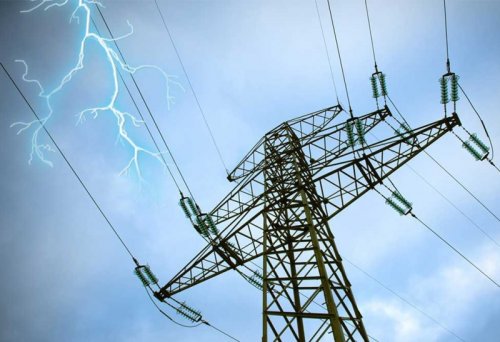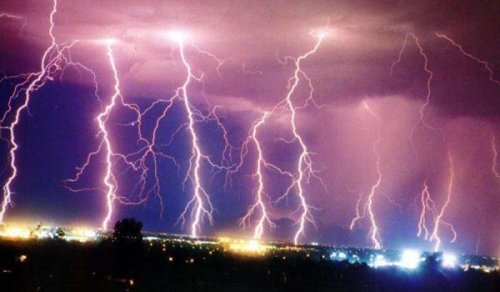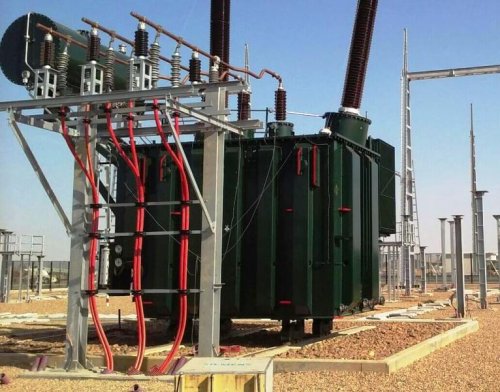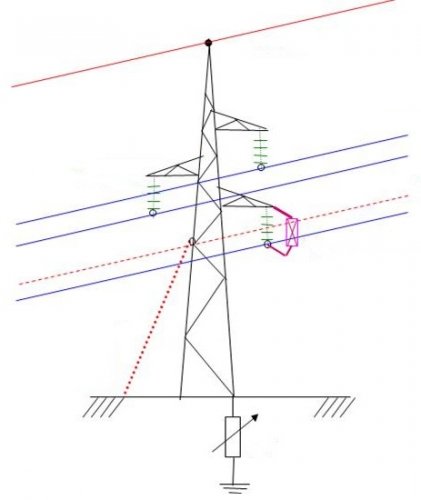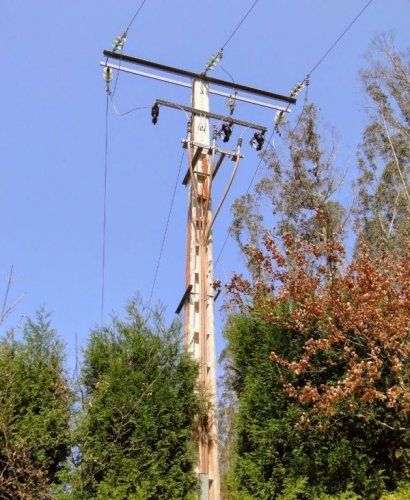Atmospheric overvoltage in electrical networks
Sudden short-term voltage rises to a value dangerous to the insulation of an electrical installation are called overvoltage... By their origin, overvoltages are of two types: external (atmospheric) and internal (switching).
Atmospheric surges arise from direct lightning strikes in an electrical installation or from lightning strikes in its immediate vicinity. Atmospheric overvoltages represent the greatest danger for an electrical installation, as with direct impacts lightning they can reach 1,000,000 V, with a lightning current of up to 200 kA. They do not depend on the value of the nominal voltage of the electrical installation. They are particularly dangerous for lower voltage installations, since in these installations the distances between live parts and the level of insulation are lower than in high voltages.
Atmospheric overvoltages are divided into induced and direct lightning strikes. The first occurs during a lightning discharge near an electrical installation, for example a substation or power line.The surge is generated by the inductive effect of a thundercloud charged to a very high potential (several million volts).
In the case of a direct lightning strike, in addition to the electromagnetic action causing overvoltage, mechanical damage is also observed, for example the splitting of wooden poles or overhead power line sleepers.
The induced surges are of the order of 100 kV, which is significantly less than the surge caused by a direct lightning strike. They propagate along the overhead line conductors after the discharge in the form of evanescent waves.
A lightning strike in most cases consists of a series of individual pulses following one another. The entire discharge lasts tenths of a second, and the individual pulses have durations of tens of microseconds each. The number of individual pulses during a lightning strike can be from 1 to 40.
Protection of electrical installations from atmospheric overvoltage
It was noted above that atmospheric overvoltages can reach several million volts. The insulation of electrical installations cannot withstand such voltage levels, so it needs additional protection against damage. These agents prevent damage to electrical equipment and should be used in electrical installations both to increase the uninterrupted power supply to consumers and to protect people and animals.
Special attention should be paid to surge protection of 10 and 0.4 kV overhead lines, as well as consumer substations located in rural areas.
Fires can be a serious consequence of overvoltage, particularly due to direct lightning strikes. Therefore, the most serious attention is paid to the organization of a correct and reliably working protection against atmospheric overvoltage (or lightning protection).
The problem of lightning protection includes measures to protect individual elements of electrical installations from direct lightning strikes, isolation of electrical machines and devices from damage, from impulses passing from the line of surge waves. These measures boil down to the installation of protective devices and devices that divert an impulse (wave) from a surge into the ground before the wave reaches any critical element of the installation and disables it.
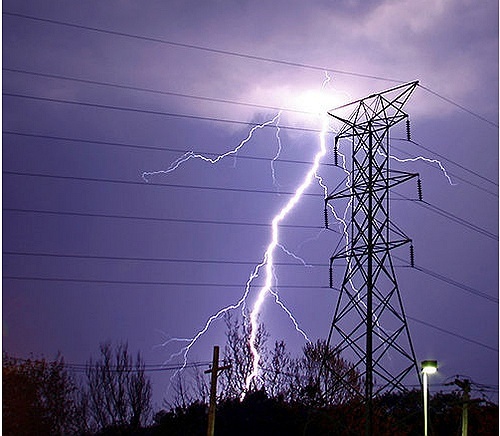
Therefore, the main part of all protective devices are earthing switches. They must be fulfilled in accordance with PUE and provide reliable discharge of the charge to the ground.
Lightning arresters, arresters and spark arrestors are used as primary protective equipment against atmospheric overvoltage.
The lightning rods orient the atmospheric discharge towards themselves, taking it away from the current-carrying parts of the installation. To protect concentrated objects (for example, substations or other structures), rod lightning rods are used, and to protect extended ones (for example, overhead line wires), contact wire lightning rods are used. To drain the charge into the ground, arresters are installed and candles.
For lightning protection of station generators and transformers, a set of means is provided for both protection against direct lightning strikes and surge waves falling from the line.
Protection against direct lightning strikes is provided by lightning rods and contact lightning on the approaches of the overhead line to the station or substation. Generators are protected from waves falling from the line with limiters that limit the amplitude of the wave to a value that is not dangerous to the insulation of an electrical machine.
Large generators are not recommended to be directly connected to outgoing power lines. For small stations supplying electricity to consumers at generator voltage, such a connection is possible with the additional installation of special limiters with improved characteristics to the generator.
If the generators are connected directly to the step-up transformers, that is, according to the generator-transformer block diagram, they do not require special protection measures against poly overvoltage.
Overhead lines with a voltage of 6 — 35 kV, made on wooden poles, do not require special surge protection. The lightning resistance of their insulation is provided by the insulating properties of wood. Here it is only important to maintain the following minimum insulation distances between wires (in wood): 0.75 m for voltages 6-10, 1.5 m for voltage 20 and 3 m for voltage 35 kV.
Individual sections of overhead lines with weakened insulation (for example, using metal or reinforced concrete supports, connecting the overhead line with a cable, etc.) are protected by arresters or spark gaps (at low currents) (see — Pipe restraints and Valve restrictors). The resistance of the grounding devices of these devices should be no more than 10 ohms.
Limiters and spark gaps are installed on the supports of two overhead lines crossing each other or at the intersection of an overhead power line with a communication line. The resistance of the grounding devices here should not be higher than 15 ohms. The grounding slopes of the supports must have a bolted connection, and their cross section must be at least 25 mm2.
In order to restore power above the overhead line after fast transient lightning faults, automatic reclosing devices (automatic reclosing) of the lines are used. With the successful operation of automatic reclosers as a lightning protection device, users will not feel a power interruption that will not be more than 0.2s, and their normal operation will not be disturbed.
The cable glands are protected at both ends with stops.
The protection of consumer networks with a voltage of 0.38 / 0.22 kV is carried out especially carefully. These networks are typically aerial and their design is most susceptible to atmospheric surges as they rise above all other structures and pass through open areas.
Low-voltage networks are equipped with lightning protection devices that deflect impulse discharge currents to earth. This allows you to protect people and animals, prevent fires caused by lightning and their penetration into internal electrical wires.
In low-voltage networks, connections to lightning protection grounding are provided for hooks or pins of insulators of all phase conductors and the neutral conductor.
Earthing is also provided on supports with wire taps to houses or directly at the entrances of buildings. The resistance of the protective earthing device must not exceed 30 ohms.
In 10 / 0.4 kV consumer substations, low-voltage windings connected to overhead lines must be protected by arresters. They are installed as close as possible to the transformer and are connected to the common ground circuit of the substations. When the power of the transformer is 630 kVA and more, two additional protective earthings are made along the lines extending from it — at 50 and 100 m from the substation with the specified resistance value.

